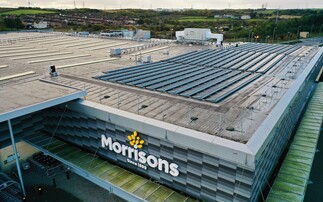Arup's Paula Kirk argues cities must lead in tackling climate change, and public, private and civil society partnerships will be critical to their success
Cities have long been important centres of economic, political and social activity, they also have a significant impact on our planet's health. Indeed, whilst cities generate around 80 per cent of GDP, they also consume over two-thirds of global energy and emit more than 70 per cent of greenhouse gases. As we get closer to COP21 it's logical - and imperative - that cities take the lead tackling the global challenge that is climate change.
Many have already made significant commitments to this: 228 global cities, representing 436 million people, have already set greenhouse gas (GHG) reduction goals and targets. These alone could lead to savings of 2.8 metric tonnes of CO2 (GtCO2e) by 2020, while the cumulative savings by 2050 (13.0 GtCO2e) could be equivalent to the current annual emissions of China and India combined.
To help cities accelerate and expand climate action, we need a better understanding of the challenges faced, and how we are equipped to meet them. This is why Arup, in partnership with C40, is researching how climate change is being tackled in our cities, and how these efforts can be amplified. While there can be no simple answer to such a complex problem, as the Kyoto treaty and the last summit in Copenhagen have shown, we believe that an increased emphasis on open dialogue between public, private and civil society groups is an unequivocal must.
Navigating budgetary and legislative concerns, which often loom most heavily over negotiations, is of course no mean feat. Our experiences, however, have shown that a city's carbon emissions depends less on the strength or types of power held by city authorities but more on how they leverage their assets and functions. Whether these schemes or commitments to change come as city wide public and private initiatives, like the Mayor of London's Decentralised Energy for London programme or localised organisations Camden Climate Change Alliance we can see that workable and most importantly achievable, solutions on the horizon.
Looking at city infrastructure, and in particular transport, we're already seeing the benefits that are coming as a result of improving the efficiency of urban public transport. Consequently we're seeing a number of cities already integrating low-emission public transport systems into their infrastructure. A prime example of this can be seen in Melbourne, where city authorities are working with the Australian government to provide excellent quality pedestrian access to all public transport stops, stations and interchanges. Though the city initiated the plan to improve pedestrian access, the state government takes on the responsibility to fund and implement it.
In the built environment we're are now seeing, across various geographies, sustainability criteria being incorporated into city planning policies, placing the onus on developers to achieve the carbon savings that the city wishes to achieve. The importance of these seemingly simple steps cannot be understated, after all the built environment is responsible for more than 30 per cent of global CO2 emissions.
While it can be easy to categorise these changes and potential schemes in terms of the mega cities dotted around the globe, there exists a real opportunity here for other, sometimes smaller, less well funded, cities to lead the way. Often stymied and worried by a lack of representation at talks of these nature, they can instead collaborate with various public and private entities to elevate their profile and be at the forefront of innovative free-market collaboration in their approach to climate change.
If we are to avoid the last minute accord that manifested itself out of the 2009 Copenhagen Summit, the onus must be placed on creating the right support structures to enable already capable cities to continue to reduce their environmental impact. The importance of networks, such as C40 and 100 Resilient Cities cannot be underestimated. They illuminate best practise and are instrumental in establishing and supporting collaboration between public and private companies and civil society groups, which will be critical if cities are to meet their climate change objectives and create cleaner, greener and more resilient cities for our future.
Paula Kirk is Arup energy and climate change leader
This article is part of BusinessGreen's Road to Paris hub, hosted in association with PwC








